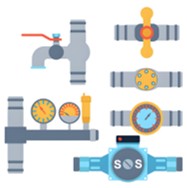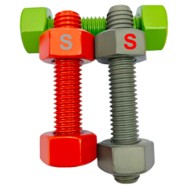
Figuring out wardrobe dimensions may seem akin to unraveling an enigma
- Noting your individual frame starts the sizing journey
- Record chest, waistline and hip dimensions to guarantee match
- Check manufacturer measurement charts when shopping
Don't depend solely on label sizes since they can deceive Choose instead to compare your personal figures with the chart. Uncovering your look takes iterative personal trials.
Unveiling the mystery behind size guides
Size irregularities in apparel often puzzle consumers globally. Reading size tables can feel like solving a complex brainteaser, given brands apply unique numerical systems. Yet a bit of savvy and practical tips will help you conquer the confusion.
- Start with understanding the metrics each label applies. Regularly you will see US, UK, European and Asian benchmarks.
- Proceed to compare chest, midriff, hips and measurement of length. See how the chart's figures correspond to your body numbers.
- To finish, rely on the retailer's notes for fit exceptions. They commonly list helpful tips, exceptions and care notes.
Locating the best fit during clothing selection
The landscape of clothing scales may leave buyers puzzled. A medium in one label might read as a small in another. Such variation stems from the distinct fit charts brands maintain. Thus make a careful start by recording accurate personal measurements. Use a tape to capture your chest, midriff and hip numbers. Avoid relying purely on your customary size label. Sizes may change even inside the same brand depending on style. Determining the best fit is a process of trial and adjustment.

Opting for generic dimensions or custom tailoring
For products such as furniture you face a standard or custom choice. Both alternatives have strengths and weaknesses to consider. Default measurements provide simplicity and common savings. If you have an unusual space or special requirement custom may suit better
- Consider requirements and cost when selecting size approach
- Collect precise size data whether for room or clothing
- Research makers and options thoroughly before purchase
In the end the right dimension relies on your individual case.
Navigating cross-border sizing differences
Converting across international and brand scales may be challenging. Fortunately, accessible tools help bridge sizing differences. Commence by noting the usual clothing and shoe measurement methods. Consult cross-reference charts to bridge different systems. Consider that personal body contours determine how sizes fit. Review customer experiences and size hints prior to purchase.
A straightforward approach to understanding sizes
Dealing with apparel charts commonly confuses people. Labels usually rely on individualized sizing methods, even so, simple tactics below will help you navigate sizing.
- Primary action: take accurate measurements with a fabric tape
- Afterwards, match your figures against the seller's chart
- Mind your silhouette because it changes fit expectations
Conclusively, trying on remains the surest path to the right fit.
A full guide to standard male and female measurement sets
E-commerce heightens the challenge of choosing the correct size. Accordingly, the following is a full guide to standard gendered sizes. For jeans, tops or dresses these notes aid in determining correct size.
- Begin by accepting that brands and nations use different scales
- Subsequently, capture waist, hips, bust and chest numbers correctly
- In the end, select a larger size if you're between two entries
With these recommendations you can tackle sizing charts securely. Have a confident shopping trip!

A practical sizing handbook for kids' clothes
Picking the right size for children sometimes seems daunting. Children grow rapidly so sizes change quickly. Rely on the label's measurements instead of suggested ages. Capture measurements for chest, waist and height to ensure fitCorrectly measuring bust, waist and hip for fit accuracy
Ensuring garments fit well begins with correct body stats. You will need a flexible tape and perhaps a helper to get precise readings. Stand tall but relaxed with feet separated and shoulders soft
A guide to interpreting XS, S, M, L, XL and XXL
Today’s sizing landscape has grown complex and varied. Variation between makers reduces the chance of consistent fits. Analyzing the spectrum of sizes helps resolve confusion. Let's explore what the letters and numbers mean in practice!
Embracing size diversity

Size inclusion is about valuing every body and its differences. This involves rejecting narratives that demand one ideal shape. Together we can create spaces that foster body comfort and pride.
- Opt for daily practices that reinforce body love Choose body positivity and self-acceptance every day Decide each day to celebrate body kindness and positive views Adopt routines that Size Chart strengthen body confidence and care
- Bear in thought that attractiveness spans diverse body types
- Question the images and narratives that promote narrow ideals
- Prefer actions that cultivate self-acceptance and respect
